Barbra’s Career Takes Flight ... The 1970’s
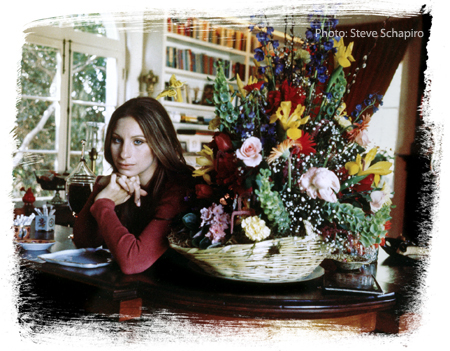
By Matt Howe / Barbra-Archives.com
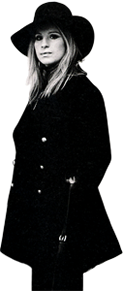
I look forward to working less and simplifying my life, to fulfilling some of my potential as an individual and as a woman. My little-girl fantasy of being a recording star, a theater star, a concert star and a movie star is impossible to maintain; each of them suffers. There is so much else to learn, so much more to do. What I’d like is more time—time not only to read the stacks of political journals that have been piling up, but also time to read Good Housekeeping to find out different ways to decorate my son’s sandwiches.
—(Barbra Streisand, circa 1970)
After winning the Oscar for her performance in Funny Girl (1968), Streisand and manager Marty Erlichman set their sights on the movies. Streisand signed a contract with Ray Stark and his Rastar Productions that committed her to four feature films of his choice, in essence; Funny Girl being the first. “We go through periods where we love and hate each other,” Streisand confessed about Ray Stark. “He’s a real character, an original.”
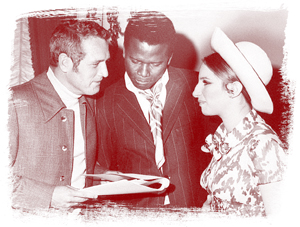
In order to discuss Barbra Streisand’s career in the 1970s, one must look back to 1969 when Barbra took a proactive step for artistic control of her film career. She joined forces with actors Paul Newman and Sidney Poitier to form First Artists Production Company, Ltd. (Steve McQueen joined in 1971, and Dustin Hoffman in 1972). The company guaranteed the actors complete creative autonomy over their films. They agreed to make three pictures for which they received no advance money in payment. The films were to cost in the $3 to $5 million dollar range. Their profits were in the backend: 10% of the gross film rental and 25-33% of the profit.
(Photo, above right): Paul Newman, Sidney Poitier, and Streisand sign the incorporation papers at a press conference.
Upon entering into the First Artists Production Company deal, Streisand told the press: “I have always had to be free to play the roles and sing the songs I felt strongly and instinctively were right for me. I know that my new associates have the same desire for artistic individuality and total commitment. This company will fill that need for each individual and at the same time we’ll have a teamwork situation based on mutual respect and understanding. We’ll be making many diverse films and we’re determined that every one of them—drama or comedy or musical—will reach the very high standards we demand of ourselves.”
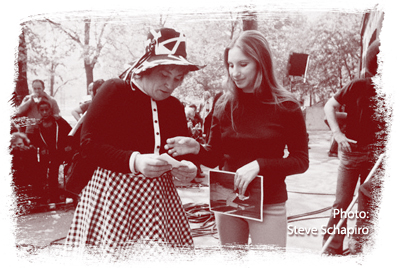
Besides her film and television work, Streisand also concentrated on political causes. In June 1970 Streisand supported Bella Abzug in her campaign for the Democratic seat in Congress. Streisand held a fundraiser for Abzug in her New York home, and also joined the candidate as she rode around in a flatbed truck, campaigning.
Streisand spent the first few years of the 1970s performing live in Las Vegas.
She also made bold attempts to record modern music:
On October 28, 1972 a telethon for George McGovern’s presidential campaign was broadcast on King-TV in Washington state. Included were filmed endorsements for McGovern from Barbra Streisand and Carroll O’Connor. The show was one hour in length.
- Live Concert at the Forum (1972)
- What's Up, Doc? (1972)
- Up the Sandbox (1972)
- The Way We Were (1973)
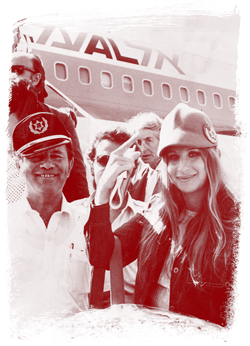
(Photo, left) Streisand visits Israel on her way back from filming Up the Sandbox.
In May 1973 Reporter A. H. Weiler wrote a story that Barbra’s next film role would be a nurse in Paramount Pictures’ comedy-drama With or Without Roller Skates. “The movie will be adapted from an as yet-unpublished novel by George Slavin,” said Peter Bart, Paramount’s vice president for production. “The story is loosely based on taped interviews Slavin did with an actual New York nurse who worked in war veterans’ hospitals for many years.” Streisand’s longtime manager, Marty Erlichman, was pegged to produce the picture – his first film production! “Barbra and I met the nurse from the book twice,” Erlichman told Weiler. “She is a fascinating woman — hilariously funny, and very realistic about her running battle with hospital authorities over what she considers the rights of her patients.” The only part of this story that actually ended up transpiring was that Erlichman produced Streisand’s next film – in which she had a non-singing role in an old-fashioned comedy (For Pete's Sake, 1974).
Streisand met Jon Peters, and by the mid-1970s, he had become an important part of both her personal life and professional career.
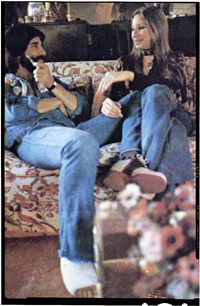
Jon Peters explained, “I was a recluse until I met her. I lived in the mountains in a house I built out of old wood and stucco. Everything was very overgrown. Barbra’s house is very manicured. ”
Barbra elaborated: “Do you know how wonderful it is for me to be with someone where I’m not the only one with an idea about what we should do on Sunday? In the beginning he was really crazy, a nut. He took me to a party once and said he wanted to go for a walk with me, then put me on his shoulders and wouldn’t let me down. He was so vital, so verbal, really terrific and alive. He’s half Cherokee Indian, you know, and not frightened by the sea or the mountains or sharks or things that I’m afraid of. And I like a man who isn’t afraid.”
“You know,” Barbra said, “I’ve experienced one part of my career, and I feel now that I”m in another phase. My star started rising in 1964 and now it’s more than ten years later and watching Jon’s star rise is like having the whole thing happen again. And Jon has a way of seeing me, he knows me as a woman, as a sexual being, and I’m tired of being just Funny Girl, a self-deprecating waif.”
Streisand challenged herself in the 1970s. In July 1975, Barbra wanted to perform in a Shakespeare play. She’d talked about playing Juliet to reporters since she first came on the scene. So Barbra took a class at the Actors’ Studio West. With Sally Kirkland, Barbra worked on scenes from Romeo and Juliet.
Kirkland told Craig Hall (Barbranews.com), “We went to see Lee Strasberg. He gave us a scene from Romeo and Juliet —and the tears started to roll down her face—I said ‘The emotion that you’re feeling now, is how Juliet felt about Romeo’. We initially did it at Barbra’s Carolwood home— she kicked ass in front of Lee Strasberg and the Actor’s Studio, he said she was one of the best Juliet’s he had ever seen.
Streisand recalled the scene: “When I played Juliet at the Actors Studio and the nurse finally tells me she’s set up a meeting with Romeo, I actually froze. Uh, oh, my God, married? Really? Could I cope with that? Onstage, I became numb, and I believe that was the right feeling.”
Streisand was proud of her work, too. “You know what I think is the best thing I have ever done?” she explained to Playboy magazine in 1977. “It was a scene from Romeo and Juliet at the Actors Studio two years ago.” Barbra elaborated on the genesis of her foray into classical acting: “Two years ago, I said to my agent that I wanted to play Romeo and Juliet, would she call up the networks and see if they were interested in a special? They weren’t! They said, ‘Does she sing in it? Who’s playing Romeo?’ How big a star do you have to be before you can play Romeo and Juliet on TV? I was so discouraged.
“I was talking to the Shakespeare Company in Connecticut for years and the one in England, but I always chickened out. Maybe because I had such a terrible experience on the stage in Funny Girl.”

(Photo, above): Barbra Streisand taking tennis lesson with world-famous tennis pro, Pancho Segura.
There was a scheduling snafu with The Tonight Show in 1975. As the story goes, Ray Stark and Jon Peters arranged for Streisand to appear on The Tonight Show to promote Funny Lady, which opened in theaters March 1975. Barbra was scheduled to appear July 9 and details were arranged with The Tonight Show’s producers, which included approval of the lighting and orchestra (Streisand would sing two songs). Unfortunately, Barbra’s management cancelled her appearance a day before the show. Several biographies claim Carson was mad and got his revenge on Streisand by pulling the wig off an impersonator the next night. Johnny Carson himself told Rolling Stone magazine the whole story in 1988:
“I remember once Streisand, she was booked on the show and we had a call that afternoon saying she wasn’t going to come; I don’t know why. But we billboarded her for two days. I went out and said that Barbra Streisand was supposed to be here, she hasn’t been here for twelve years, but I think it will probably be another twelve years before she is asked back. It was just a little joke, nothing vicious. [Smirking] So the next night, I get Madlyn Rhue, and we dressed her up in a Streisand get-up and she started to do ‘People’. For a moment you couldn’t tell if it was Streisand or not because she was lip-synching. I walked over, and said, ‘Thank you, but we don’t need you.’ And she walked back to the curtain and it was wonderful. I was just taking advantage of what was going on. And of course the papers picked that up and they made a big thing about Streisand and I having a quarrel.”
Barbra did write kind comments about Carson in her liner notes to 1991’s Just For The Record CD set: “I remember Johnny inviting me back several times and that was nice.”
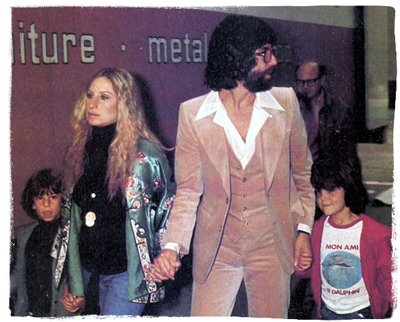
(Photo, above): Jason Gould, Streisand, Jon Peters, Christopher Peters.
Streisand weathered horrible critical backlash directed at her and Jon Peters while she made A Star is Born. Her hard work, however, was rewarded when her film was a huge hit and her fans embraced her more than ever. A Star is Born received Grammys, Golden Globes and People's Choice awards.
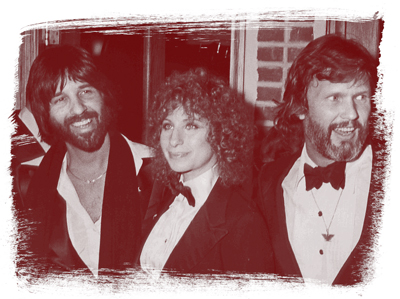
Frank Pierson's article in New West magazine (“My Battles with Barbra and Jon”) prompted Streisand to agree to an in-depth interview with Playboy magazine in Fall 1977.
Lawrence Grobel interviewed Barbra Streisand for Playboy. The process of getting an appointment to see Streisand was arduous, as Grobel tells the story …

“I wrote her publicist a letter saying, ‘Look, if Barbra will talk to me, Newsday reaches 350 papers around the country, and Playboy reaches 7 million’ […] I didn’t hear back for half a year [...] Frank Pierson, who wrote the script for A Star Is Born, wrote an article in New West magazine, ‘My Battles with Barbra and Jon.’ In that article, [Pierson] told what a pain-in-the-ass of an experience it was to make this movie with her. He also mentioned Jason, her son, and that just blew her top, she was just angry with all the things he said about her. Her reaction was she was going to talk, and I became the vehicle for her […]
“[…] So I said to her, ‘Are going to do this or not?’ She says, ‘Call Lee Solters (Streisand’s publicist) and we’ll make arrangements.’ It was my moment of decision. I said, ‘I don’t want to call Lee Solters, I’ve been calling him for months. You want to do this, give me your number and I’ll call you directly. So she went over to a yellow pad, and in the corner of the pad, in a one-inch strip, she cuts off this piece of paper, writes the letter B, and a phone number. I mean, it was the size of a thumbnail. Later on, as I got to know her — we spent nine months together — I learned that Barbra believes that everything she touches would be auctioned or sold. She didn’t want to do anything that could get sold. So I got it. It was her number, and I was to call and we would set up a time.
“We started talking, doing the interview, and we spent nine months together, off and on. The agreement I made with Barbra was, ‘Every time I meet you I have to regain your trust. I will not give the interview to Playboy until we’re done.’ Barbra was the exception here, because most other stars would’ve been done with it in an hour to get it over with. It ended up, I had 52 hours of tape with her. And she became the first celebrity that was on the cover of Playboy. She was on the cover with a Superman T-shirt. So there you have it.”
Streisand finished up the decade with a comedy film, The Main Event.
Having ascended to the heights of popularity in the 1970s, Streisand was able to record anything she wanted (classical songs, pop songs, standards...) and also able to broker multi-million dollar films starring herself as the main attraction. Still, she searched for more. Wanting to stretch herself as an artist, Barbra sought more control over her films. In the 1980s, Barbra took a giant step (and risk) toward being a film auteur.

What’s wrong with wanting more?
End.
